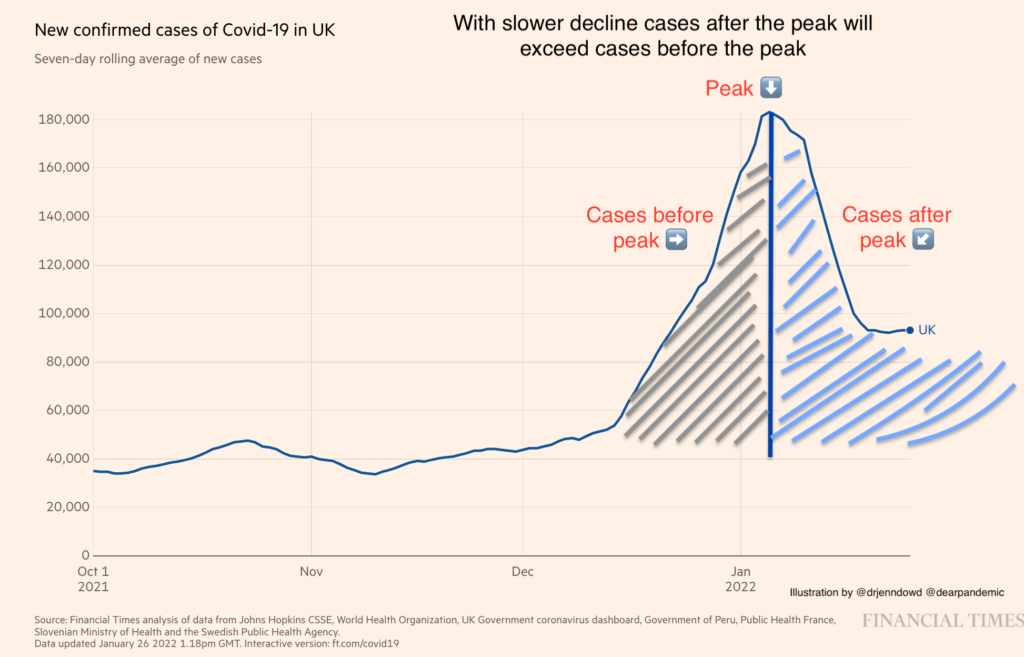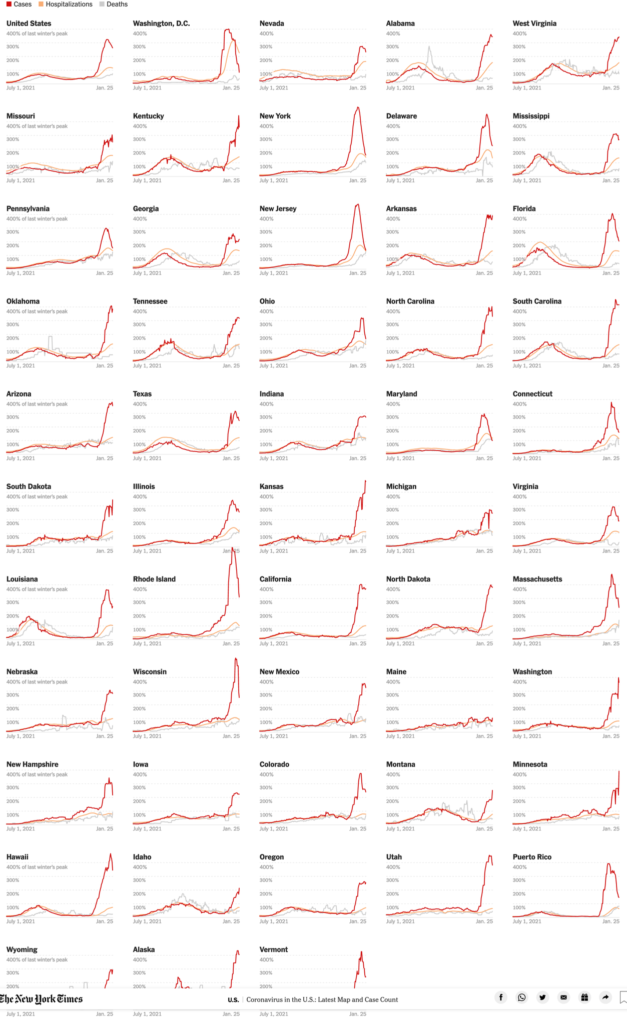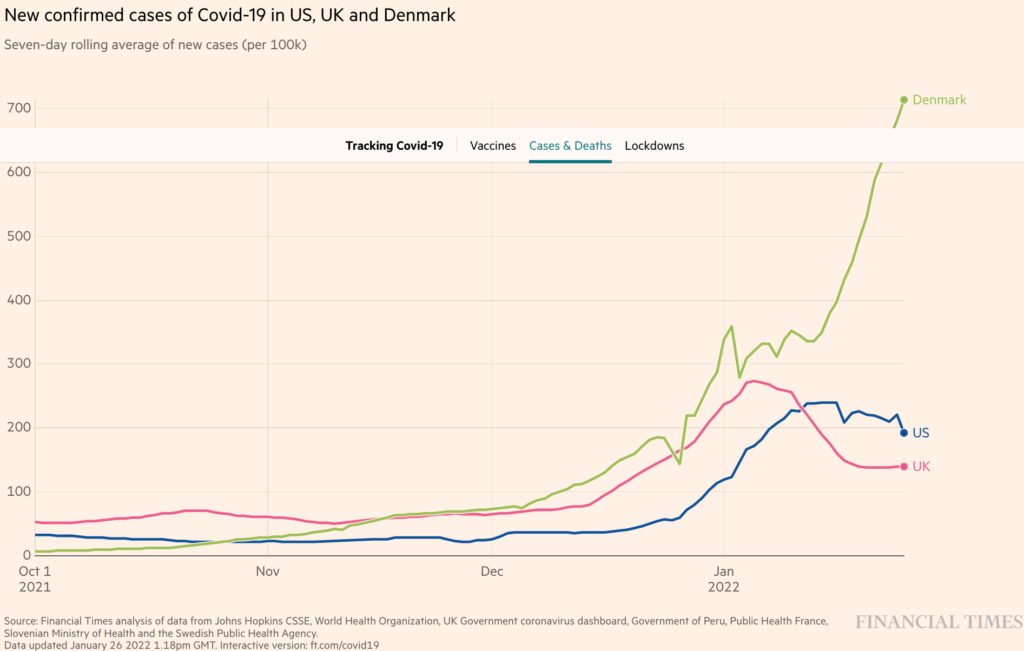A: Sort of…. Remember that even if cases come down as quickly as they rise, there will be as many cases *after* the peak as before (think area under the curve!).
➡️ And if the downward slope is *slower* than the rise, we will see *more* cases during the decline from a surge.

One potential silver lining of the super transmissible Omicron variant may be that it burns bright but fast. Cases rose and fell quickly in South Africa (though hospitalizations and deaths are falling more slowly). The UK appears to have turned the Omicron corner. Many US states appear past their peak in cases, though there is a lot of regional variation (see figure).

When cases peak, it can feel like we are in the clear. It would be welcome news if Omicron falls as fast as it has risen. The Nerdy Girls are cheering on that “exponential decay” (when cases halve rather than double every few days). But we do need to temper this feel-good moment with a bit of caution.
📉 Even on the downhill side of a steep peak, there are A LOT of cases. So that feeling we all have that everyone we know has COVID-19 will likely stick around a bit longer. This means your chances of being exposed to COVID interacting with others is still high, even if those chances are getting smaller rather than larger each day.
We also need to be aware that the fall may *not* be as fast as the rise in cases. What starts as a decline can easily turn into a high plateau. The UK is a couple weeks ahead of most of the US in its Omicron wave, but recent big declines are now leveling off at still high levels (see figure). This is reminiscent of the Delta wave in the UK which never really came down from its high plateau over the summer after some initial fall from the peak. Denmark is showing that a seeming decline in cases can swiftly turn around into an even higher peak.

Where is it all going? Like most public health scientists, we are completely done making predictions. This pandemic has humbled everyone. But the shape of the curve is not determined purely by nature- human behavior still plays an important role. Without formal restrictions in the UK, mobility data showed that people voluntarily changed their behavior a lot and went out less as Omicron surged in December. When cases go up people step up their precautions such as masking or testing before gatherings. These small adaptations can add up to a big effect at the population level and slow the spread, contributing to getting past that ever-important peak. BUT—the opposite is also true. While getting past the peak is psychologically soothing, don’t use it as an excuse to kiss strangers and throw all caution to the wind.
What does this mean practically? It’s natural to have an optimism bias—if cases are moving in the right direction, we feel comfortable relaxing some of our precautions. But relaxing too much can put us individually at risk while cases are still super high AND put the brakes on that downhill momentum at the population level. As mentioned earlier, if the downward slope is slower than the rise, we will see *more* cases during the decline from a surge (see illustrative figure). More cases still mean more hospitalizations and deaths—and the U.S. is currently seeing more than 2000 COVID-19 deaths A DAY.
In weighing up your own risk budget, keep an eye on absolute levels in your local area, not just whether cases are declining or not (spoiler alert-they are still high EVERYWHERE). We recognize that for many who are boosted or not high risk themselves, your daily decisions may not change much at all. On the other hand, the immunocompromised & those with kids in school may feel very vulnerable. If you are in a category where you want to be more cautious, it’s worth holding steady a bit longer until that downhill slide of the curve gets even more momentum. As a bonus, the more people–high risk or not–who make those “tiny wise decisions” the faster and steeper that “exponential decay” will be.
So that means that on the downhill is when we want to ….STEEPEN THE CURVE! 📉
Despite all the rhetoric, we still are in this together.
Love,
Those Nerdy Girls
Links:
CDC community transmission tracker
New York Times Current COVID data by States
Explainer on Exponential Decay


